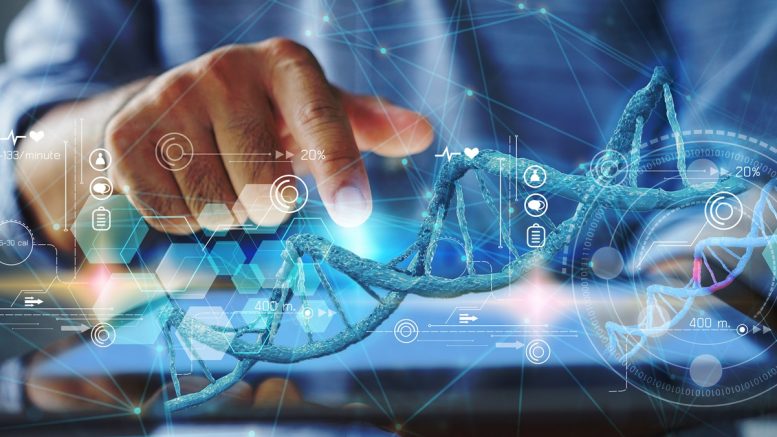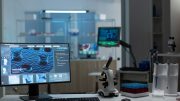Adverse event (AE) case intake in Life Sciences is crying out for disruption by AI. And now, at last, Generative AI and Large Language Models are actively and reliably contributing to earlier and more accurate conclusions about Safety events, enabling real-time interventions. ArisGlobal’s Emmanuel Belabe explores how far the technology has come in providing human-like automated case intake; the difference it is making; and the broader opportunity across pharma R&D operations.
In the 2020s it is expected that any authorised drug or medicinal therapy designed for human use will be safe. Pharmacovigilance processes are designed to uphold that position over time, once a product has been authorised for patient consumption. Approaches to post-market Safety monitoring have changed little in decades however, despite soaring volumes of available information – submitted in an increasing array of formats, via a proliferating range of channels.
Current approaches don’t take into account, for instance, the actual contents of a case, which means there is no discretion to allocate teams’ bandwidth according to a potential case’s complexity or risk. In particular, adverse event (AE) case intake is costing companies dearly to deliver without being sufficiently timely or accurate to reliably contain emerging safety issues or stave off costly recalls.
Mimicking human discretion
Technology-enabled process automation has long promised to transform the speed, efficiency, and accuracy of AE case intake and triage, by capturing and assessing relevant Safety signals wherever and however these come to light.
Up to now, machine intelligence has not come close to mimicking human powers of data extraction, filtering, inference, or deduction. Early automation systems had to be highly structured and painstakingly trained to recognise every possible format and variant of how important data might show up – from basic information such as the patient’s date of birth to richer detail such as the combination of possible contributors to the adverse event (from the individual’s age and general state of health to the other drugs they may be taking). This compromised the systems’ ability even just to recognise and extract the right data. This in turn limited the potential to transform process efficiency and Safety delivery.
Now, however, Generative AI (GenAI) and Large Language Models (LLMs) are beginning to positively disrupt adverse event data collection with powerful results. In early pilots data extraction accuracy and quality have exceeded 90 percent, and overall efficiency gains related to the intake process have topped 65 percent. And this is all to build on.
Tackling an increasingly unsustainable PV burden in adverse event intake
Advanced automation solutions, which transform the data collection part of the AE case intake process, are being enthusiastically received in an industry desperate for a modern, more efficient way to execute case intake/safety data collection, as volumes of case data soar and pressure mounts to accelerate analysis times.
A recent industry survey[1] shone a light on the biopharma industry’s growing appetite for AI-powered automation, revealing that over 75% of biopharma R&D organisations already use some form of advanced automation within daily processes today, and more than 70% plan to expand business process automation over the next 18 months.
This growing appetite for viable solutions has intensified in line with a maturation of AI-powered process automation technology – from early robotic process automation aligned to regimented processes, toward a less inhibited approach where the technology understands much more about what it is looking for (irrespective of format), and what to do with it.
GenAI technology, using LLMs, can quickly identify and infer what’s relevant and important and reliably summarise key findings for the user – and even extrapolate from them to make predictions about future scenarios. It can do this without the need for protracted ‘training’ and system validation. Rather, specialised applications can now be developed that can apply GenAI-type techniques, contextually, to data they haven’t seen before – learning from and processing the contents on the fly.
This is a huge leap forward that has seen pharma companies start to put GenAI AE intake solutions to the test in their operations, under the watchful eye of their Safety professionals. The ability to simply instruct a system to “Scan X document for Y contents” paves the way to faster, higher-quality extraction of more relevant data, reducing the risk of something significant being missed, and improving downstream efficiency.
Taking the strain, removing unconscious bias
A big part of the business case for harnessing GenAI in AE case intake management comes from the scope for handling first-line capture and processing of very high volumes of data – freeing up more of Safety professionals’ time to analyse the findings.
On top of this, GenAI removes human limitations such as fatigue, mental overload, distraction, data blindness, and unconscious bias. An AI-powered tool can draw on the findings of millions of prior cases and assessments, to make credible predictions and unbiased assessments regarding causality (the likelihood of a direct link between a product and a reported adverse event), based on probability.
The early output is proving very encouraging, and confidence in the technology is growing rapidly as a result. It helps that the links back to the sources are readily traceable for checking.
Extending the transformation potential
Beyond AE case intake, there will be other powerful use cases across Life Sciences R&D Safety and Regulatory operations, so it is a good idea to allow for additional applications in the future, for instance by deploying an enabling ‘platform’ rather than a single-purpose application.
Strong next contenders for GenAI/LLM treatment include real-time pharmacovigilance assessments and associated decision-making (e.g. the earlier identification of unexpected benefits/discovery of new indications); harnessing international Regulatory intelligence to transform marketing authorisation applications and maintenance; and clinical trial modeling, reducing the reliance on traditional clinical studies.
A recommended first step toward advanced automation would be to break down how processes are currently managed, the core requirements driving those processes, and where the pain points are. The next priority should be to review and rewrite standard operation procedures so that they can evolve with and be improved by advanced technology, both now and in the coming years.
About the author
Emmanuel Belabe is Senior Vice-President for Customer Success, Global Customer Support, and Solution Consulting at ArisGlobal. He is an experienced Safety director with a strong record in applying the latest IT innovations in healthcare and life sciences.
References
[1] ArisGlobal’s 2024 Industry Survey Report, Life Sciences R&D Transformation: Ambitions for Intelligent Automation & Today’s Reality,





